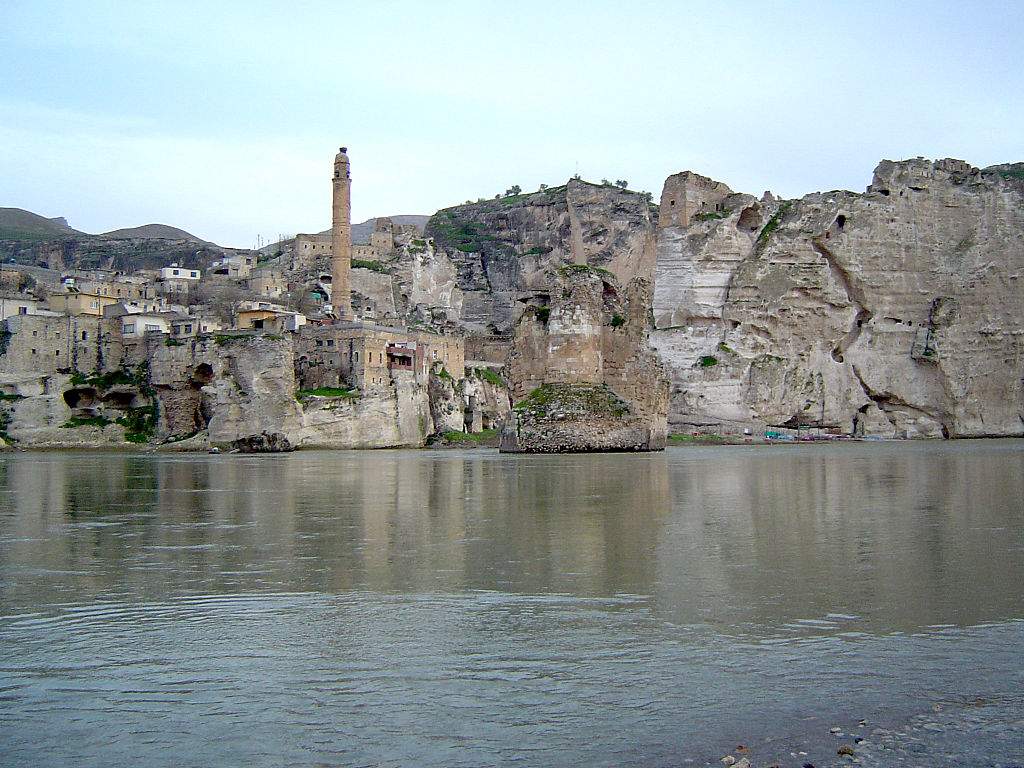Turkey, the ancient city of Hasankeyf is about to be submerged under water for the construction of a huge dam
Ahuge dam, the Ilisu Dam, will soon cause the flooding of one of Turkey’s oldest cities, Hasankeyf, a thousand-year-old center of Mesopotamia. The project has been planned for years, but only a few days ago did the filling of the reservoir begin, which will cause Hasankeyf to disappear and be submerged in water.The flooding was supposed to begin last year, but due to a severe drought it had not been possible to proceed with the work. This year’s heavy rains, which caused the level of the Tigris (the river around which the dam was built) to rise significantly, made the plan possible, and soon the water will begin to rise: it is estimated that Hasankeyf will be completely submerged by April next year.
The construction of the Ilisu Dam began in 2016 and its purpose is to increase water supplies to an area of Turkey (we are in the far east of the country, in the southeastern Anatolia region, deep in Kurdish territory) greatly affected by climate change and improve hydropower production: when fully operational, the dam reservoir will have a capacity of 10.4 billion cubic meters of water and will be flanked by a power plant with 1.200 MW of power. The project cost 1.3 billion euros, and took many years to complete partly because many international financiers, after realizing that the dam would cause damage to the region’s archaeological heritage, withdrew their support. But there is more than just the disappearance of the city: there is also the probable environmental damage (the Tigris ecosystem is likely to be drastically disrupted), geopolitical upheaval (the dam will cause a reduction in the flow of water from the Tigris to Iraq and Syria, the other two countries washed by the river), and social problems, since about six thousand Hasankeyf residents will have to leave their homes. For the latter, the alternatives are twofold: find new housing with what the Turkish government has awarded them for expropriation (and that is often little) or accept relocation to a purpose-built new town a short distance from Hasankeyf on the banks of the river.
Residents have tried everything to stop the project, or at least to make sure that it does not touch the ancient town, but all attempts have not produced results. Some have even told Business Insider newspaper that the government has gone so far as to punish those who protest, threatening accusations of terrorism (the area, after all, is among the politically hottest in the country): Turkish President Erdogan in 2016 even gave a speech during which he compared those who opposed the Ilisu dam project to members of the PKK (the Kurdistan Workers’ Party listed by Turkey and the US as a terrorist organization). Attempts were also made to play the UNESCO card with an attempt to inscribe Ilisu on the World Heritage List, but of course Turkey never sent the request to the international heritage organization.
So there seems to be no hope for the city, which has a very ancient history: the first settlements date back 11,000 years, and which has gone through Assyrian history unscathed, Roman history (it was also a legionary outpost on the border with the Sasanian empire), was part of the Byzantine empire, was conquered first by the Muslims and then also by the Mongols. In recent months, some of the relocatable monuments have been dismantled from their locations and transported to the new town, where they will compose a kind of open-air museum (with interventions much criticized by the international community of archaeologists), while other valuable relics of the past (such as the remains of the stone bridge over the Tigris, dating back to the 12th century) cannot be moved and will therefore be submerged by water. And with them will end much of the history of an ancient city.
Pictured: the city of Hasankeyf. Ph. Credit
 |
| Turkey, the ancient city of Hasankeyf is about to be submerged under water for the construction of a huge dam |
Warning: the translation into English of the original Italian article was created using automatic tools. We undertake to review all articles, but we do not guarantee the total absence of inaccuracies in the translation due to the program. You can find the original by clicking on the ITA button. If you find any mistake,please contact us.



























